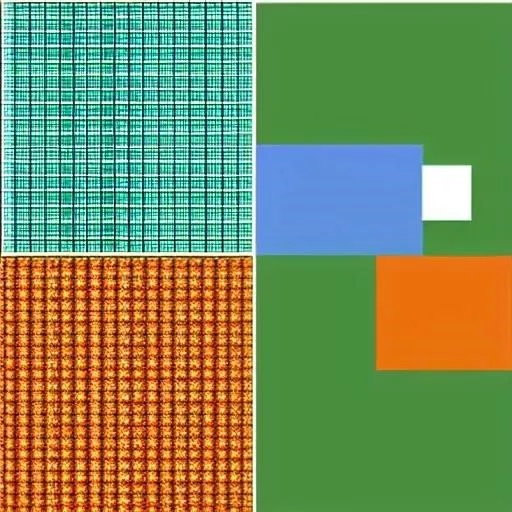For nearly two decades, Java stood as the undisputed monarch of Android development, its widespread adoption and robust ecosystem forming the bedrock upon which countless applications were meticulously crafted. Developers, fluent in its syntax, built the digital world that now resides in billions of pockets globally. Yet, a seismic shift has been quietly, yet powerfully, reshaping this landscape. A new challenger, more nimble and remarkably efficient, has not just entered the arena but is rapidly claiming the crown: Kotlin. This evolving narrative isn’t merely a technical footnote; it represents a profound transformation in how we conceive, design, and ultimately deliver mobile experiences.
The transition from Java to Kotlin isn’t a sudden revolution but rather an organic evolution driven by the relentless pursuit of developer productivity, code safety, and modern language features. Google’s pivotal endorsement of Kotlin as a first-class language for Android in 2017, followed by its “Kotlin-first” declaration, irrevocably altered the trajectory. This strategic move signaled a clear path forward, empowering developers with a language designed to mitigate common pitfalls, reduce boilerplate code, and foster a more enjoyable programming experience. The debate of Kotlin vs. Java for Android Development is no longer about which language can build an app, but which one will define the future of mobile innovation.
| Feature/Aspect | Kotlin for Android Development | Java for Android Development |
|---|---|---|
| Year Introduced | 2011 (JetBrains), 2017 (Google Official Support) | 1995 (Sun Microsystems) |
| Primary Developer | JetBrains (original), Google (significant adoption/promotion) | Oracle (current owner), Sun Microsystems (original) |
| Key Features for Android | Null safety, Coroutines for async, Extension functions, Data classes, Reduced boilerplate, Interoperability with Java | Mature ecosystem, JVM compatibility, Strong object-oriented principles, Widely adopted frameworks |
| Learning Curve | Moderate for Java developers (similar syntax concepts), steeper for absolute beginners. | Relatively high for beginners due to verbosity and complex concepts, but well-documented. |
| Performance Considerations | Comparable to Java, often compiled to similar bytecode; minor overhead possible but rarely a bottleneck. | Highly optimized JVM, excellent performance for most applications. |
| Community Support | Rapidly growing, strong support from JetBrains and Google, increasing number of libraries and resources. | Vast, long-standing, and highly mature community with extensive documentation and legacy projects. |
| Google’s Official Stance | “Kotlin-first” language for Android development, actively promoted and integrated into official tools. | Fully supported, but no longer the primary focus for new Android development. |
| Best Use Case | New Android projects, modernizing existing Java codebases, cross-platform mobile development (Kotlin Multiplatform). | Maintaining legacy Android applications, large enterprise systems with existing Java infrastructure, educational purposes. |
| Reference: Android Developers ⸺ Kotlin | ||
Kotlin’s appeal is multi-faceted, stemming from its foundational design principles. Its inherent null-safety features, for instance, dramatically reduce the dreaded `NullPointerException`, a common and frustrating bug that has plagued Java developers for years. By integrating insights from modern language design, Kotlin streamlines development, allowing engineers to write significantly less code to achieve the same functionality. This conciseness isn’t just about saving keystrokes; it translates directly into enhanced readability, reduced maintenance overhead, and a profoundly improved developer experience. Moreover, its seamless interoperability with existing Java codebases means teams can gradually migrate, adopting Kotlin for new features while maintaining their legacy Java components, fostering a pragmatic and forward-thinking approach to technological evolution.
Industry giants and innovative startups alike are increasingly gravitating towards Kotlin, showcasing its undeniable practical advantages. Companies like Pinterest, Trello, and even Google’s own applications are leveraging Kotlin’s power to build more robust and scalable Android experiences. “Kotlin’s clarity and conciseness have genuinely transformed our development cycles,” remarked a senior engineering lead at a prominent tech firm, reflecting a sentiment widely echoed across the industry. “We’re seeing fewer bugs in production and a marked increase in developer satisfaction. It’s not just a language; it’s a productivity multiplier.” The adoption curve is steep, with job postings increasingly prioritizing Kotlin proficiency, signifying a definitive shift in market demand and skill requirements.
While Java remains a formidable and deeply entrenched language, particularly in enterprise systems and existing Android applications, its momentum in new Android development has undeniably slowed. Its verbosity, coupled with the ongoing need for extensive boilerplate code, often contrasts sharply with Kotlin’s elegant syntax. However, Java’s vast ecosystem, its mature toolset, and the sheer volume of legacy code mean it will continue to be a vital component of the software world for many years to come; The future, however, is being written by languages that prioritize developer well-being and efficiency, mirroring a broader trend in software engineering towards more expressive and safer programming paradigms.
Looking ahead, the trajectory for Kotlin is incredibly bright. Its expansion into multiplatform development, allowing code sharing across Android, iOS, web, and desktop, further cements its position as a language built for the future. Developers who embrace Kotlin are not just learning a new syntax; they are adopting a mindset centered on modern best practices and efficiency. The choice between Kotlin and Java for new Android projects has largely been settled, with the industry overwhelmingly swinging towards Kotlin. This isn’t a eulogy for Java, but rather a celebratory announcement of Kotlin’s triumphant arrival as the defining language for the next generation of Android innovation, promising a future of more stable, efficient, and delightful mobile applications.






